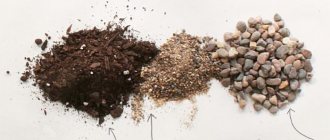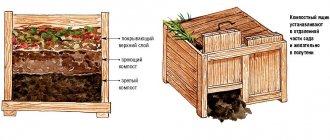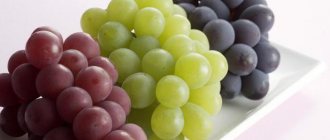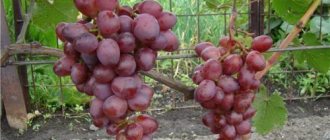You still don't know how to make wine from grapes
? We are ready to help you in this matter. Winemaking is an art that takes many years to learn, but you can also try making a delicious drink at home. You may not get a masterpiece, but its taste will definitely please you. For winemaking at home, it is better to choose grape varieties such as Festival, Crystal, Saperavi, Regent, Druzhba, Rosinka, Platovsky, Stepnyak. At the same time, varieties such as Lydia and Isabella can also be used.
At the very beginning of cooking, care must be taken to prepare all containers that will be used. They must be dry and perfectly clean. If this moment is not taken into account, then fungi will get into the drink, spoiling its taste. Buckets, bottles and barrels, etc. fumigate with sulfur or rinse with boiled water and wipe with a dry cloth. Avoid containers where milk has previously been stored. No treatment will save you from the smell.
How to make tasty wine from grapes
1. We collect and process material. It is necessary to collect berries only in sunny, dry weather. This will allow them to retain the wild yeast necessary for fermentation. Two days before harvesting, the bunches should not be exposed to rain. Only ripe fruits are suitable for making wine. Unripe fruits contain a large amount of acid, which will worsen the taste of the finished drink. But in overripe berries, vinegar fermentation begins. This, in turn, can spoil the entire wort. Sort the picked berries over two days. If left for longer, they will become unusable. Wash the harvested grapes thoroughly, remove rotten and unripe fruits. After this, transfer the berries, along with the resulting juice, into an enamel saucepan to fill ¾ of the volume. It is best to crush grapes with your hands. In this case, you will not damage the bones. And they secrete substances that give wine a bitter taste. If you have a lot of grapes, gently crush them with a rolling pin. Avoid contact between juice and metal. This causes oxidation. Place the pulp (crushed grapes) in an enamel container with a wide neck - a saucepan or bucket. It is acceptable to use a wooden barrel or container made of food-grade plastic. After this, cover the container with the pulp with a clean cloth and place it in a dark place for three to four days. After 12-20 hours, the juice will begin to ferment, and a “cap” of skin will appear on the surface. It needs to be beaten a couple of times a day, and the pulp needs to be mixed with your hand or a wooden stick.
3. Install the water seal. Homemade wine must be protected from the influx of oxygen and at the same time ensure the release of carbon dioxide. To do this, install a water seal structure on the container with juice. The most common version is a water seal made of a jar, tube and lid. At home, you can use a medical glove with a hole made in one finger.
4. Active (initial) fermentation. Once you have installed the seal, you need to ensure the container is at the right temperature. The best option for preparing white wine is from 16 to 22 degrees, and for red wine – from 22 to 28 degrees. Do not allow the temperature to drop below 10 degrees. If this happens, the yeast will die and will not have time to process all the sugar into alcohol. In just a couple of days you will find that the wine must has stopped fermenting. To restart fermentation, make a special starter for wine. The simplest option: take a bottle, add 150 g of raisins, 50 g of sugar, add warm water to get 1/3 of the volume. Close the bottle with a stopper and place in a warm place for 3-4 days. As soon as bubbles appear, drain the starter, mix with a liter of wort, and add again to the container with the drink. Thanks to this, fermentation will resume.
5. Add sugar. To obtain 1% alcohol you will need about 2% sugar in the wort. In Russia it is very rare to find a grape variety whose sugar content exceeds 20%. What does this mean? And the fact is that without adding sugar you can only get a drink with a strength of 10-12 degrees. However, if you look from the other side, the maximum strength of the drink is only 15-16%. At higher concentrations, wild yeast will simply die in alcohol. At the same time, we cannot fail to mention that it is simply impossible to determine the sugar content in grapes without using a special device. It is also useless to rely on data on the sugar content of grape varieties in your climate zone. All that remains is to navigate by the taste of the juice. The sugar content of the wort should not exceed 10-15%. To ensure this, add sugar in parts. A couple of days after the start of fermentation, taste the wort. If the sugar is processed, it will become sour. For each liter of juice, add 50 g. Pour a couple of liters of wort into a separate container, dilute sugar in it, pour the resulting wine syrup back into the bottle, shake thoroughly. Repeat the procedure several times. In the first 14-30 days, 3-4 times will be enough. Over a certain period of time, sugar content will stop decreasing. This will indicate that fermentation has completed and you can move on to the next stage.
6. Remove the wine from the sediment. As soon as the water seal stops producing bubbles within one or two days, and the wort itself has cleared and a loose layer has formed for a few days, pour the drink into another container. This is necessary in order to get rid of dead fungi that collect at the bottom. A couple of days before removing the wine from the sediment, place the fermentation container on an elevation above the floor. To do this, you can use a chair, bench or other device. As soon as the sediment is back at the bottom, pour the wine into another container (dry and clean) through a siphon. The end of the tube can be brought no more than 2-3 cm closer to the sediment.
How to make wine from grapes:
7. Control sugar content.
Now you should determine the sugar content of homemade wine. Active fermentation has ended, so the added sugar will remain in the drink and will not be processed. You need to add granulated sugar according to your taste preferences. To begin, drain a couple of liters of wine, add granulated sugar, stir, pour the liquid back into the bottle, stir. If the sweetness suits you, then you don’t have to add granulated sugar in the future. 8. Maturation (quiet fermentation). At this stage, the final taste is formed. It lasts from 40 to 380 days. There is no point in aging longer as it will not improve the taste of the wine. Place the bottle with the drink under the water seal again or simply close the lid tightly. Store the container in a basement or cellar at a temperature of 10-16 degrees. Avoid sudden temperature changes. Every 7-10 days, pour the wine from one container to another through a straw. As a result, the liquid will become lighter and lighter. What do you think? 9. Pasting (artificial lightening). Even if you store wine in the cellar for several months, it may still remain cloudy. In this case, use the method of purifying wine from impurities - egg white or gelatin. Clarification can only improve the appearance of the liquid.
10. Bottle and store. The final stage is pouring the finished product into bottles and sealing with corks. Wine must be stored in a cool, dry place (temperature – 6-8 degrees), in a lying position. It is not necessary to maintain this exact temperature; it can be lower. The main thing is that the bottles do not freeze.
How to make wine from grapes step by step recipes
Recipe No. 1.
Ingredients:
Granulated sugar – 3 kg – grapes – 10 g
Preparation:
1. Take the unwashed bunches and pick the berries from them. 2. Squeeze a small amount of grapes into an enamel bucket with your hands until the juice appears. 3. Cover the vessel with gauze and leave in a warm place to ferment for four days. Stir the mixture twice a day with a wooden spatula. 4. As soon as the pulp rises, throw it into a colander to drain the juice, squeeze through cheesecloth. 5. Pour pure grape juice into jars, add granulated sugar, stir. 6. Put a medical glove on the neck, pierce one of the fingers with a needle, and tie the elastic band tightly in a circle. 7. Leave the wine to ferment in the room for a couple of weeks. 8. Once the yeast has settled, carefully strain the drink. 9. Place the finished product in a cool place for about a month. During this time, pour it into other bottles three times, leaving sediment in the previous ones. 10. Leave the wine for another 1 month.
How to make wine from grapes quickly
If you are asking this question, then we want to disappoint you, because a truly tasty drink is difficult to get in a short time.
Would you also be interested to know? As you can see, it is quite possible to make delicious wine at home. It will taste no worse than a drink purchased in a store. In addition, it will be very useful, because it will not contain preservatives or dyes.
The range of wine products is quite rich. But wine made from white grapes deserves special attention from its consumers - a light drink with a pleasant aroma and delicate taste. Depending on the amount of added sugar, the product turns out dry, semi-dry or dessert.
People who are far from professional winemaking think that white wine can only be made from light-skinned grapes. However, it is not. Varieties with dark and pink fruits are also suitable for the production of white wine. The main conditions for raw materials are their juiciness, moderate acidity and sufficient sugar content. The juice squeezed from colored grapes should be light.
White wine differs from its red “relatives” in its production technology: it ferments in its own juice and is not saturated with natural dyes. Coloring substances are contained in the skin of the berries and do not color the juice.
You can make white wine from fresh grape juice. It should not be diluted with water or sweetened with sugar. Let's learn several recipes for wine made from white grape varieties, which can be prepared at home.
How to properly press grapes into wine at home and create a press with your own hands
The process of making homemade wine includes several stages. One of them is mashing berries to extract a large volume of juice from the fruit. It is worth carrying out the procedure correctly. Any mistakes will lead to a deterioration in the aroma and taste characteristics of the finished drink. Therefore, beginners in the production of the product often wonder how best to press grapes into wine. This can be done using different methods.
Methods of pressing grapes
There are different ways to squeeze grapes:
How to crush grapes at home
To mash the grapes and get a delicious wine as a result, you should follow certain rules.
We press with our feet
Grapes were crushed by feet even before the advent of mechanical devices. To do this, the fruits were placed in wooden vats, after which they were kneaded with feet. This process could take up to 10 hours a day.
It was believed that it was easiest to squeeze out the maximum amount of juice with the feet. This method helps to crush the berries, release beneficial substances from the peel and clean the pulp.
With your feet you can feel whole fruits and cold areas that negatively affect fermentation.
However, this method has now lost its popularity. The main disadvantage of the procedure is considered to be insufficient hygiene. The method is used by small manufacturers or hobbyists.
Presses and presses
To process a large amount of raw materials, it is worth choosing special devices. The mechanism of operation of the devices is based on the movement of shafts that rotate in different directions. They squeeze the fruits, which leads to the release of juice.
There are different options for crushers, each of which has certain features:
- With destemmer. This detail allows you to completely separate the fruit from the brush. Thanks to this, it is possible to avoid tanning components from the ridges getting into the drink. Desaleters differ in design.
- Without destemmer. Using such a press slows down the process of obtaining juice, since the raw materials require preparation. Before carrying out the procedure, it is worth separating the fruits from the stem.
- Roller destemmers. Such devices help to process grapes in the same way as is done in a production environment. In this case, the juice is squeezed out of the fruits, after which the wort is filtered using a destemming machine. The distance between the shafts is adjustable. It is determined by the grape variety. The standard option is considered to be a gap in the size of the bones.
- Impact centrifugal devices. They can be horizontal or vertical. The operating mechanism is based on the impact force of the motor. It makes 300-400 revolutions per minute. In addition, the crusher has a destemmer that cleans the juice from pulp.
Juicing devices should not be used for wine. Under thermal influence, the structure of the substance is disrupted. As a result, it will not be possible to prepare wine.
Hand tools
If there is little raw material, it is permissible to squeeze it out by hand. Hand tools are also permitted. If you plan to carry out the procedure with your hands, you should wash them well and wear gloves. It is recommended to mash the berries slowly. In this case, your hands should be near the bottom of the container.
It is advisable that the juice does not come into contact with the metal. The exception is stainless steel. Otherwise, there is a risk of deterioration in the taste of the drink and the occurrence of oxidation processes.
It is also permissible to use a wooden rolling pin to prepare the grapes. A pestle would also be a good option.
To speed up the processing process, use a drill or screwdriver with a mixer-shaped attachment. This method does not require any additional equipment. However, in such a situation it is not possible to break all the grapes. Small fragments of ridges penetrate into the pulp with the fruit.
How to make a grape press with your own hands
Presses make it much easier to make juice for wine. The device includes a frame, a barrel, and a pallet. It also includes a pressing device, a mesh with small holes and a power screw.
To make the device, it is worth taking 2 pipes that will act as racks. Their diameter should be 22 millimeters. Then attach the profile to them using welding. It should have a U-shape. Its height should be such that the nut fits well inside. There should be a clamp at the base of the pipes. With its help, the press is easily attached to the window sill.
To make the frame, you should use wooden blocks. Their cross section should be 4x10 centimeters. The length of the product should reach 60-70 centimeters. The size of the rollers affects the width of the fixture. A suitable parameter is 20 centimeters.
The interval between the bars must match the length of the rollers. For the press it is worth using corrugated rollers. Their depth should reach 3 centimeters. The rollers should be directed to the axes in a helical manner.
It is worth making shifts at intervals of 10 centimeters. They should be 2 centimeters. After which the device is secured with bearings to the frame. The rollers rotate at different rates. Therefore, the gears must differ in diameter.
It is recommended to load the berries into a ladle. It should have a pyramidal shape. It is recommended to place the bucket on the cross bars. The interval between the bucket and the roller is kept to a minimum. It should not be more than a centimeter.
At the base of the press there should be a vessel for collecting juice. For proper fruit compression, the gaps must be manageable. They help keep the seeds intact, resulting in a delicious, high-quality wine. Damaged seeds make the drink bitter. This is due to the large number of tanning elements.
The basket is made of stainless steel. Its thickness should be 2 millimeters. It is recommended to separate portions of raw materials with spacers. They are made from 2 steel discs and fixed by spot welding. Holes of 3 millimeters are made in them.
Common mistakes
When making juice, inexperienced winemakers make the following mistakes:
- use metal utensils;
- combs are added to the product;
- grind the bones;
- use a juicer.
There are quite a few ways to obtain grapes for making wine. Thanks to this, each person will be able to choose the appropriate option.
How to make grape juice for white wine
White grapes are harvested when overripe. Such raw materials impart to the drink a soft taste, pleasant aroma and strength of real alcohol. But residents of hot regions must harvest the crop when it is slightly unripe so that the berries provide the product with the listed qualities. The bunches are picked in sunny weather or a few days after rain. Moisture washes away wild yeast, so you need to wait for new strains to emerge to start the fermentation process.
Juice for white grape wine is obtained as follows:
- The fruits are removed from the clusters and sorted, discarding rotten and insect-damaged raw materials.
- Unwashed berries are crushed with a wide wooden rolling pin.
- The seeds are not removed or crushed.
The resulting juice is wort. 1 kg of grapes yields approximately 650 - 750 ml of juice (the amount depends on the quality of the berries and the plant variety). If the owner wants to add sugar to it, the amount of sweetness should not exceed 27% of the total volume of the wort.
The main principles of creating grape juice
The taste, color and consistency of the finished drink directly depend on the ripeness, variety and method of grinding the berries. Separating the liquid from the fruit is a straightforward task, but excellent quality juice requires attention to all stages of production, starting with the selection of grapes.
Cooking features:
- The best juices are obtained from wine hybrids: Isabella, Cabernet, Lydia. A drink made from dark fruits of technical varieties has a rich taste and beautiful color. Light fruits are also used, but if the juice comes out pale, it is tinted with a small addition of bright berries.
- The main stage of preparation is separation from the pulp: pulp, seeds and peel. By mechanically grinding the pulp and then squeezing it, the taste becomes more intense with a pleasant tartness. If the seeds and peel are separated without chopping, the drink will be light and soft.
- If the fruit is properly ripe and sweet, it is not necessary to add sugar to the preparations. If an unripe product is used or the variety is not sweet enough, then during the cooking process add 50 to 100 g of granulated sugar per 1 liter.
- It is permissible to chop dark grapes without removing them from the bunch. Its branches contain tannins, which enriches the taste and does not harm the keeping quality. White varieties must be separated from the cluster, otherwise the juice takes on a greyish, unpleasant color.
While sorting through the fruits, spoiled berries are discarded. It is better to make jam or marmalade from wilted and raisin-like specimens. Bursted after heavy rains, cracked, without signs of rot, are acceptable for processing into juice or wine. In preparation, special attention is paid to cleaning the grapes: they are washed in several waters, trying to remove all the waxy coating. The surface of the peel contains yeast fungi that promote fermentation processes; if possible, they should be washed off.
White grape wine with juice
This wine recipe is considered a classic. It does not require additional ingredients. The main raw material will be Chardonnay, Sauvignon, Aligote or other technical grapes. Strong-smelling Muscats are not suitable for the production of table wines.
It is generally accepted that exquisite wine from white grapes at home is obtained only from the juice that has flowed independently without human intervention. It is better not to squeeze out the pulp, as it makes a good secondary wine. Fresh juice must be kept in a glass or enamel container for 6 - 12 hours so that the suspension of the smallest particles precipitates. Drain the settled liquid using a siphon or thin hose. Fill a clean fermentation bottle 2/3 full.
To improve the quality of the drink and protect against diseases, sulfur dioxide is added to the wort. The proportion is 0.5 – 1 g of substance per 10 liters of juice. Sulfation is carried out at will, because at home the volume of alcohol production is most often insignificant.
Fermentation of white grape wine should occur at room temperature without changing conditions. The container is closed with a water seal and the fermentation process is observed. If the wort does not ferment, it is important to prevent it from souring. To do this, throw some raisins into the bottle or add a special starter.
Wild yeast processes natural sugar in 1.5 - 2 months and produces initially dry homemade wine. If a white semi-sweet drink is needed, fermentation is forcibly interrupted by increasing/lowering the temperature of the wort or carrying out sulfitation.
Young wine is removed from the yeast and taken to a cool room with an air temperature of 5 - 10°C. The remaining yeast will settle in 1 - 2 weeks. The product is again removed from the sediment and poured into another container. When stored in a dark, cool cellar, the wine will become lighter due to the accumulation of sediment. It needs to be drained from the grounds periodically throughout the year. It’s a hassle, but the wine will turn out clear, aromatic and impeccably delicious.
Choosing grapes
The second important point is to choose high-quality grapes for wine. An excellent option would be fresh grapes cut from the branches.
Grapes should not be washed before preparing wine. Natural yeast is collected on its skin, which will then ferment our wort. If you rinse the berries before use, the wort simply will not ferment.
As for the choice of a specific type, there is a lot of scope. Red, black or green varieties are equally suitable for wine: Chardonnay, Bianca, Muscat, Sauvignon Blanc, Riesling, Pinot Blanc, Pinot Noir, Saperavi, Cabernet Sauvignon, Merlot, Sangiovese, Carmenere, Isabella.
If you live in the northern region and don’t have fresh grapes on hand, you can use store-bought berries.
Wine grapes are rarely found in stores, but table varieties, which are abundant in supermarkets, are also quite suitable for a simple recipe.
After we have chosen our grapes and prepared the dishes, we can begin preparing the wine itself. Below we provide 2 of the simplest and most versatile grape wine recipes for home use.
So, to prepare 5 liters of finished wine, we will need:
- Grapes – 7 kg
- Sugar – 50-100 g per 1 liter of juice obtained
Accordingly, if you want to make more wine, then simply multiply the amount of grapes used proportionally: for 10 liters you will need about 14 kg of grapes, etc.
The recipe itself is divided into several stages.
Stage I
We sort through the grapes, clear them of large debris, twigs and other things. Then we carefully crush all our berries. This can be done using a special press, or with your hands. At home, when the volumes of raw materials are small, we recommend the second method. A press or crusher can crush the seeds of the berries and thereby spoil the taste of the future wine.
Transfer the resulting mass (pulp) into a large container. We fill the container no more than ¾ of the total volume. Fermentation containers made of food-grade plastic or glass are ideal. Cover the wort with a clean cloth and leave the wort for 3-4 days in a warm place to ferment. Stir the wort with a glass or plastic spoon 2 times a day.
Stage II
After 3-4 days, active fermentation will begin. The pulp will begin to foam and float. Our task is to remove the cap from the foam and strain the wort. The hat can be removed directly by hand. In order not to lose the product, place it in gauze and squeeze out the juice thoroughly.
After we have dealt with the head, we need to filter the wort from other smaller residues. We do this in any convenient way: through gauze or (which is more convenient) using a special overflow siphon with a filter.
Stage III
Pour the grape juice into a clean container. It can be used in a large glass bottle or plastic container. We close the container with a water seal and put it away for fermentation at a temperature:
- 18-22°C – for light grape varieties.
- 20-28°C – for dark grape varieties.
Some recipes suggest using a regular glove instead of a water seal, but this is not entirely correct. The glove creates pressure inside the container, as a result of which the juice is saturated with carbon dioxide. Experienced winemakers recommend using only water-based water seals.
Stage IV
In 3 days we can take the first samples. If the drink is very sour, then add sugar - 50 g per 1 liter of wort. We do this as follows: mix sugar with a small amount of juice in a separate container, heat the mixture over low heat and stir it constantly until the sugar dissolves in it. Then pour the sweet syrup into the main wort.
After 3-4 days we taste the drink again. If the acid still appears, repeat the procedure. We can do this up to 4 times until we achieve the desired sweetness and fermentation ends.
Fermentation lasts on average 3 weeks. After the expiration date, pour the wine from the sediment into separate clean, washed bottles and tightly cap them. The wine will mature in them for several more months. The minimum waiting period is 40-50 days.
After a couple of months, wonderful fragrant homemade grape wine is completely ready for consumption. We recommend storing in a cool, dark place (no more than 10°C) for a year, no more.
The recipe with adding water is even simpler. But, as tests have shown, the simplest is the best!
We will need:
- Grape
- Water – 1.2 liters per 1 liter of grape mass
- Sugar – 400 g per 1 liter of grape mass
Cooking technology
- We sort through the grapes: remove debris, twigs and large dirt. Press it with your hands and pour it into a separate container. Add water and sugar. Mix.
- We immediately close the container with a water seal and put it away to ferment in a warm and dark place.
- Fermentation will last 2 weeks. Once every 3-4 days we check the taste of the wort. If the wine is too sour, add sugar at the rate of 70 g per 1 liter of wort. We do this until we achieve the desired taste.
- After 2 weeks, drain the sediment from the sediment in any convenient way and bottle it to ripen.
- Ripening will last approximately 40-60 days.
Ice white wine made from grapes
Recently, Eiswein dessert wine, which ordinary people call “ice”, has been in high demand. The drink differs from other white wines in its rich aroma and soft, light taste. The technology for its preparation does not coincide with classic recipes, but making fashionable ice wine with your own hands is quite possible.
Ingredients:
Winemaking begins with freezing the berries in the freezer, where they remain for 1 day. Under the influence of low temperatures, raw materials acquire other qualities that make the future wine unique.
On the second day, the fruits are placed in a bowl, kneaded and the juice is squeezed out. Next, the general principles of wine making are followed. Sugar is added to wine at the final stage of production, when the drink is filtered and ready to be bottled for storage.
White grape wines are stored in dark, cold rooms with high humidity and good ventilation. Under such conditions, corks do not dry out or oxidize from contact with alcohol.
It is advisable to consume dry wine in the first two months after ripening. Experts advise aging strong white wines for up to 12–15 years. An important condition for preserving the qualities of the intoxicating drink is the horizontal arrangement of the bottles.
There are a very large number of ways to make wine at home from grapes. It’s simply impossible to describe everything! But we will consider only the most popular of them, describing each stage in detail.
In the article:
How to lighten blanks?
Sometimes the drink needs to be further clarified and removed from turbidity in order to give it a better appearance. By removing the remaining pulp, the liquid is simultaneously rid of tartar (hardly soluble suspended particles). Clarified juice becomes clearer and its taste is softer.
In order for the dregs and cream of tartar to settle to the bottom, the drink requires a long period of settling, at least 2 months. Therefore, the juice is canned according to the standard recipe, but the lids are screwed on without pasteurizing the product. After about 60 days, sediment accumulates at the bottom of the jar, and the rest of the liquid becomes transparent. This means it’s time to uncork the container, carefully drain the drink from the sediment using a tube and, after packaging it in jars, carry out pasteurization.
The timing of grape juice clarification is affected only by storage temperature. At +2 °C the tartar will settle in 2 months, at +10 °C it will take at least 90 days.
You can sterilize the entire volume of juice at once by pouring it into a large container and placing it on low heat. Without bringing to a boil, heat the liquid for about 10 minutes and re-pour into treated jars.
The good thing about grapes is that all of its parts can be used in cooking. The separated cake (pulp) is used to prepare wine vinegar or processed into chacha. Even if the juice or jam from berries spoils during storage, this does not mean that the canned food should be thrown away. The fermentation process that has begun can be used to make wine.
The undeniable benefits of the berry are fully preserved with proper processing. By maintaining sterile containers and pasteurizing the finished product, you can preserve grape juice at home until the next harvest.
Necessary raw materials for winemaking
Today, wine is considered one of the most common alcoholic drinks in the world. It is drunk in all countries, and the number of varieties is simply amazing. According to the Bible, it was the vineyard that became the first crop that Noah grew after he saved humanity from the Flood. Repeating his feat, a huge number of people today grow their own vineyards and make their own wine from the harvest at home.
The main ingredient that is required in order to use the recipe for making wine is, in fact, grapes. Its variety can be absolutely any available to you. In addition, you can combine red and light varieties, coming up with your own compositions.
The most common grape varieties that are used to make wine in our area are the following: Platovsky, Crystal, Druzhba, Festivalny and others.
Their popularity is due to their high sugar content, which is important for obtaining a sweet alcoholic drink.
The leader among elite wine varieties, of course, has always been and remains Isabella. The only thing needed to improve its taste is more sugar. Among others, we can also note the grapes that no producer of noble alcohol can do without: Sauvignon, Pinot Blanc (or Noir), Cabernet, Merlot, Aligote, Chardonnay.
Ripe berries are collected only by hand. The ideal time for this is the end of September - the beginning of December (before the first frost). It is important to carry out this procedure in dry weather, and not to wash the collected bunches in order to preserve the so-called wild yeast, which accumulates on the surface of the skin and is an essential component of fermentation.
After the grapes are harvested, it is necessary to immediately separate the berries from the branches and sort them out, eliminating dried, rotten, unripe or moldy berries. The maximum shelf life of collected berries is one day.
It should also be noted that grapes react very sensitively to any changes, therefore, after bringing them into the room where you will carry out further manipulations, let them warm up a little and “get used” to the new environment.
Wine tasting
Not a single stage of production is complete without this procedure, so be prepared for the fact that you will need to carefully analyze the product according to three parameters - taste, color and aroma. There are several basic rules that are recommended to be followed so that not only sampling, but also the subsequent consumption of your drink brings pleasure and even some benefit:
- The final sample should be taken on a full stomach.
- Before taking the final sample, it is recommended to stop drinking other alcohol.
- Homemade wine is best drunk chilled.
- The choice of snacks depends on the strength of your wine.
- The optimal daily dose of wine consumption is one hundred milliliters. At the same time, you can prevent diseases such as anemia, changes in blood pressure, as well as get rid of attacks of radiculitis and help rejuvenate the body.
Among the contraindications for which it is not recommended to use either homemade or any kind are the following factors:
- Allergic intolerance to the berry itself.
- Health restrictions, in particular pregnancy, a certain age, state of mind and nervous system.
- Recovery period after surgery.
- Predisposition to alcohol dependence.
Homemade wine recipe
To prepare an alcoholic drink according to this recipe, it is best to take blue, also known as black, grapes or combine varieties. In the second case, the predominant berry should still be a dark variety.
Ingredients: ten kilograms of grapes, 50-200 grams of granulated sugar per liter of juice.
Cooking technology:
The period of active fermentation is up to forty days.
If it increases, you should get rid of the resulting sediment. If the process ends after a week, the reason should be sought in the following problems:
- Depressurization of the bottle - check and fix.
- Exceeding the sugar concentration by 10-20 percent - add water in a volume of up to one hundred and fifty milliliters per liter of wort.
- Reduced activity of wild yeast - add sourdough.
Separating wine from sediment
Next comes the process of separating the wine from the sediment and pouring it into a bottle. For the first time, this recipe will be enough for you. To learn how to make homemade wine from grapes more professionally, you will need experience and some subtleties.
How to carry out the procedure at home?
The pulp is called “fat” before pressing, since it contains about 80% of the juice by weight. To prepare the pulp with your own hands, use the wort-gravity method , that is, the juice flows freely under the influence of gravity.
Out of 10 kilograms of grapes, five and a half liters remain, which is the most valuable part, since they are free of seeds and pulp residues. Gravity wort is prepared at home using a sieve and colander, the holes of which are from 4 to 5 millimeters. It is also possible to place the wort on a piece of cloth or a double layer of gauze, then tie it in a knot and hang it over the dish.
The juice will release within five to six minutes. It should be stirred using a wooden spoon if the process is carried out through a sieve. In the case of fabric, it should be wrung by hand without equipment. Those 20% of the drained pulp can be squeezed out using a press (you won’t be able to extract anything with your hands), warmed up, or fermented. These actions are necessary to grind the wall of hard seeds. This action will produce more juice.
Storing finished wine
It is recommended to keep a dark glass bottle with the treasured liquid in a cool place, creating a slight slope for it so that the cork does not dry out and air does not get inside the bottle.
Shelf life is up to five years, subject to compliance with standards. If the wine is fortified, it can be stored for up to ten years.
If you want to learn how to prepare champagne, look at the corresponding section.
Wine is a drink that has been made since ancient times, preserving recipes from generation to generation. Wine is talked about not only as a tasty drink, but also as a healthy one, because natural wine is made from all kinds of berries and fruits and they do not lose their beneficial properties during fermentation. Homemade grape wine is no exception.
But I will not dwell on the beneficial properties of wine - this is a topic for another discussion.
One thing I want to say is that this is still an alcoholic drink and it can only bring benefits if you consume it a little.
And if you still decide to drink a glass of wine on the occasion, then let it be homemade. After all, when making it for ourselves, we certainly won’t add alcohol, dyes or flavors. Believe me, making wine at home is not at all difficult. I want to tell you how to make homemade wine from grapes and a step-by-step recipe will help you easily master this science. Now is the time for us to harvest technical grape varieties, which go very well into wine.
Homemade grape wine
Ingredients:
- dark ripe grapes of sweet varieties
- sugar
Homemade grape wine recipe:
If you have something to make wine from, then take note of this simple recipe for homemade wine. I hope I described everything clearly and everything will work out for you!
PS Wine is such an ancient drink that it has acquired all sorts of legends. Here is one of them – Georgian:
Once upon a time, grapes grew in the forest, and only birds pecked at them. One day a poor man tried the berries, he liked them and he pulled out a vine in the forest and planted it near the house. In the second year he planted ten more vines, in the third - a hundred.
In the fall, when a bountiful harvest had ripened, the poor man, so that the goods would not be wasted, squeezed the juice out of the berries. He drank what he could, and poured the rest into jugs - don’t throw it away. About two months later he opened the jug and tried it - the drink became even tastier. The poor man was surprised: how does this gnarled vine produce such a tasty drink? He called his friends and started a feast.
A nightingale flew to the feast. He drained the cup and said: “Whoever drinks this drink will sing like me!” The cockerel has arrived. He drained the cup and said: “Whoever else drinks it will fluff up like me!” The hog appeared third and, having drained the cup, said: “Whoever drinks again will fall out in the mud, like me!” Finally the fox came. She drained the cup and said: “And whoever drinks again, wine will sneak into him like a thief, like a fox, and he will do such things that he will blush for a long time.”
This is how wine affects people:
they drink a little - they have fun and sing;
a little more - they are cocking and fighting;
If they drink again, they won’t stand on their feet, they’ll fall into the mud,
and if you drink more, you can do such things that you will blush forever.
I hope that homemade grape wine according to our recipe will be only for your health and fun.
Elena Kasatova. See you by the fireplace.
Grape wine is not only a tasty, but also a healthy product, especially when you make it yourself. grape based is easy. Moreover, this process will take you a minimum of time.
Don't know which grape variety to choose for wine? Are you afraid that the drink will be unsweetened? How much berries is recommended to add? Now we'll figure it out. It’s worth noting right away that the cooking recipe is step-by-step - which means you need to prepare for painstaking and responsible work.
What grapes are best for homemade wine?
To make a recipe for tasty and healthy wine from grapes, it is best to give preference to technical varieties of this berry. In another way they can be called wine. The clusters of these varieties are not very large, and the berries are small and tightly adjacent to each other. It is also worth noting that the color of the main ingredient should be blue, since such a wine will turn out much tastier and will last longer.
The most common red berries for making homemade wine are varieties such as:
- Isabel
- Merlot
- Pinot Noir
- Argaman
White varieties that are excellent for making wine are:
- Chardonnay
- Viognier
- Macabeo
- Turgay
You can also choose Cabernet, which is perfect for making wine due to its large amount of juice and light sweetness.
When choosing a berry, you should take into account its sugar content, which should be around 20-25%. The taste of the resulting drink also depends on the ripeness of the grapes - it is important to wait until the grapes are completely ripe (sometimes it is even allowed to use spoiled berries, which will help the drink ferment faster).
Presses and presses
Widespread mechanization and electrification, having raised industry from its knees, gradually reached private households, also coming to the aid of winemakers preparing their wine at home. Today, there are special presses and crushers that help process the grape harvest at home more than a couple of buckets.
The structure of the press is a bit like the wringer from old semi-automatic washing machines. The same two rollers, rotating towards each other with the help of a handle, there is a gap between them, the size is much smaller than a grape, but larger than a seed. As mentioned above, the seeds cannot be crushed. The rollers are located at the bottom of a large funnel, into which the grapes enter for processing. By rotating the handle of such a crusher, you can easily crush a large amount of grapes at home to obtain pulp. Of course, the device described is the simplest option that almost anyone can make at home. The most advanced types of crushers are powered and in addition can separate ridges.
Step-by-step preparation of wine
Instructions and recipes often surprise many with their length and scale. But in fact, each step is completed quickly and without much difficulty.
Step 1
The recipe at this stage is characterized by the preparation of the container, which should be dry, enameled and sterile. The grapes will languish in it. Place the pre-prepared berries in any container, for example, in a large metal basin, put on gloves and start crushing the grapes with your fingers so that juice begins to flow from them (this can also be done using a wooden spatula).
When performing this stage, it is important to press all the berries so that each one releases juice. After this, transfer the crushed berries to a previously prepared container and cover it with gauze to prevent dust from getting into the wine.
Place the preparation for homemade wine in any room at room temperature. On average, the container should stand for 3 to 5 days, during which fermentation occurs, characterized by an unpleasant, pungent odor. Once a day it is necessary to stir the berries, which without this will quickly rise to the top and the juice will flow out of the container.
Important tips when performing this step:
- If desired, this recipe can be varied with a small amount of dry yeast, which should be added to the grape mass before cooking.
- Aluminum and copper cookware cannot be used, as they have the ability to oxidize.
- It is not recommended to use a blender or food processor to soften the berries, as after grinding the seeds they will give the drink an unpleasant bitterness.
Step 2
After the allotted period, remove the pulp from the container (floated squeezed out berries).
This can be done using a sieve, gauze or colander. Then we mix the pure juice with the juice squeezed out from the pulp in the same container where it was kept for several days. After this, you can leave the juice to ferment further, or you can proceed to the next step-by-step instructions. Your next steps will be to pour the juice into plastic bottles.
It is important to pour the future wine into 2/3 of the bottle or jar so that there is room for air in it.
This stage includes adding sugar to the wine, the optimal proportion of which is 50 grams per 1 liter. Since carbon dioxide will need to escape from the bottle during the fermentation process, you need to wear a medical rubber glove over it. The main thing is to securely fasten it to the neck so that it does not fly off the bottle during inflation. If desired, you can make several holes in it.
After this, we send the bottles to a storage room, the temperature in which should be identical to the previous one. Only in this case will the wine quickly ferment. This storage of grape juice should be carried out for 2-3 weeks.
Nuances when performing the second stage:
- Instead of a glove, you can take any bag.
- During fermentation, the glove will "behave" in different ways (depending on the stage): first it will inflate greatly, and then return to its original state.
- At this stage, bottles of homemade wine should not be placed in the basement; it is better to make a separate corner for them, especially if there is quite a lot of containers.
Step 3
The recipe for making wine at home in the third stage involves removing the juice from the sediment. Yeast that has settled to the bottom of the bottles can already be removed from the product: to do this, you need to carefully pour the pure juice into an empty container. Do not shake bottles under any circumstances. After this, you need to repeat the second stage: put a glove on the neck and put the container in the room for 3 weeks.
Step 4
Step-by-step preparation of wine at home at this stage requires repetition of 3 points. Only in this case you need to fill the jars or bottles to the top of the neck.
After this, the container must be placed in a cool place for 2-3 months: the longer the wine sits, the more saturated its taste will be.
Step 5
That's all - homemade wine, the recipe of which is known to many, is almost ready. All you have to do is strain the drink through cheesecloth and pour it back into the bottles.
After this, you can enjoy the amazing taste of the wine that you prepared yourself at home.
The recipe for making this wine is considered the most successful, since it is not difficult to prepare, but turns out incredibly tasty and healthy. Step-by-step instructions will help you easily prepare a drink that will delight you with its taste and aroma.
Important nuances of preparing wine step by step:
- It is important to pour the wine into jars or bottles up to the neck so that there is no air left in the container.
- The step-by-step instructions for stage 5 should be carried out every six months to achieve a soft and delicate taste of wine without sediment.
It’s quite simple to make - the main thing is to follow all the rules and the recipe so that as a result you get a delicious drink made with your own hands.
Pressing grapes to make homemade wine
Long before the advent of mechanical assistants in the form of various devices and presses, people performed the hard work of processing crops manually. The tradition of crushing grapes with your feet came to us from ancient times along with the technology of winemaking itself.
To do this, after harvesting, the grapes were placed in large wooden vats. The peculiarity of the design of these baths was that they were no more than half a meter deep, and in diameter, or length for oval and rectangular ones, reached 10 meters. And the action began, which was not like hard, exhausting work, but rather like a ritual, accompanied by flute music and peculiar dances in the vats. All the women who were free from other work picked up their skirts, tucking them into their belts, put their hands on each other’s shoulders and began to lead a kind of round dance. Men also pressed grapes in this way, which was considered even better, since their legs were stronger and the pressing process was faster.
Human legs were an ideal press for processing grapes. They easily crushed the berries, releasing the ripe pulp and all the useful substances from the peel, but at the same time they were unable to crush the seeds, the tannins and tannins of which gave the wine a bitter taste. The legs were able to sense individual berries that had escaped and catch them. They discovered cool places in the thickness of the grape porridge. Low temperature has a bad effect on the fermentation process, and these caring feet immediately accelerated the process by giving off their heat.
It must be said that this process had an extremely beneficial effect on the person himself. Unity with nature, dissolution, merging with it - this is what the grape crushers felt as they made rhythmic movements to the beat of leisurely music. Anxieties and worries left their hearts and heads, and through the feet, which received an excellent massage, the body was pacified. It's pretty hard work. After all, the pressers spent up to 10 hours a day in these baths, processing grapes on an industrial scale. But how much romantic primitive naturalness there is in it! This is probably why this ancient ritual of pressing grapes with one’s feet is still reenacted in areas famous for ancient wine-making traditions at all kinds of holidays, fairs and other events.
And in our time, small producers and lovers of wine production at home use this method. But basically it has outlived its usefulness. First of all, of course, for hygienic reasons. One has only to imagine unkempt, foul-smelling feet, and the desire to drink wine disappears completely. Although there is an opinion that the acidity obtained by pressing fresh grapes has a rather aggressive effect on foreign microorganisms, this is still a weak argument against nail fungus.
We crush grapes with our hands
In home winemaking, hands have replaced feet.
Industrial volumes were taken over by all kinds of mechanical and then electric presses and crushers. And the small volumes of wine produced at home are handled not without pleasure by the hands that grew their harvest. Doing it right at home is not at all difficult. Several conditions must be met. Firstly - cleanliness. Basins or other utensils intended for this purpose must be thoroughly washed and dried. Of course, if a few drops of water get into the wort, there is nothing to worry about. Some winemakers specifically add water to reduce the acidity of certain grape varieties. It’s just that if you start crushing grapes in a wet basin, this can only mean one thing - they were washed hastily, right there, immediately before crushing. And this washing may not be of very high quality, like everything done hastily. The art of winemaking does not tolerate fuss, and the vessels for pressure and subsequent fermentation of the pulp should be prepared at home in advance, before the grapes are harvested.
Hands and nails should also be clean. Only His Majesty's grapes can and should remain unwashed. I would like to draw attention to the fact that pressing grapes at home with bare hands can lead to allergic reactions on the skin of the hands, accompanied by itching and various rashes. It is better to put sterile medical gloves on your hands for this task - it is both cleaner and safer.
Secondly - time. The grapes should be pressed into wine immediately after picking, after sorting them first. Sorting involves removing rotten and damaged berries, as well as unripe and moldy grapes.
You should not store grapes for a long time before processing them at home, especially in deep containers or plastic bags. This leads to excessive wateriness of the berries, which negatively affects the fermentation process and the taste characteristics of the future drink. Grapes can lie at home in one layer with good air access for some time solely for one reason, so that the temperature of the bunches rises or falls to the optimal 18–20°C. Whether or not to separate the ridges is entirely your choice.
Thirdly, the quality of crushing. During the processing process, every single grape must be crushed. This must be done quickly, without delay. That's all the wisdom regarding pressing grapes with your hands.
Presses and presses
Widespread mechanization and electrification, having raised industry from its knees, gradually reached private households, also coming to the aid of winemakers preparing their wine at home.
Today, there are special presses and crushers that help process the grape harvest at home more than a couple of buckets. The structure of the press is a bit like the wringer from old semi-automatic washing machines. The same two rollers, rotating towards each other with the help of a handle, there is a gap between them, the size is much smaller than a grape, but larger than a seed. As mentioned above, the seeds cannot be crushed. The rollers are located at the bottom of a large funnel, into which the grapes enter for processing. By rotating the handle of such a crusher, you can easily crush a large amount of grapes at home to obtain pulp. Of course, the device described is the simplest option that almost anyone can make at home. The most advanced types of crushers are powered and in addition can separate ridges.
Processing grapes for white wine
Pressing grapes with feet, hands, or a crusher is suitable exclusively for red wines. With these processing methods, pulp is obtained, that is, a kind of “porridge” from grape juice, particles of peel, seeds and, in some cases, ridges. For the preparation of white wines, fermentation on the pulp is not carried out. For several reasons. The main one is preserving the color of the drink. The main amount of grape coloring matter is in the skin. If the integrity of the shell is damaged, it passes into the must and provides color to red wines. It would seem, so what? After all, white grapes have a white shell, so even if the berry is crushed along with it, the color should not suffer. And yet he suffers. The wine turns out darker due to oxidative processes, not as sparkling. The taste also suffers, since the shell contains tannins. The wine turns out rougher. Although it is white wines that are famous for being the lightest, most delicate, radiant and fresh. Therefore, they are prepared exclusively from grape juice.
For small volumes at home, you can use an ordinary juicer to obtain juice, monitoring the degree of pressure. It would be good if it was a mechanical model like a meat grinder. In such a juicer, you can control the degree of dryness of the resulting pulp; it should be well moistened, with intact seeds.
They crush white grapes at home and by hand, through canvas bags. Grapes are poured into a bag, tied, placed in a basin and pressed from the outside. Moreover, the juice, which itself begins to be released during the pressing process through the pores of the bag, is called gravity flow. It is believed that gravity produced wine is of the highest quality. Very often gravity fermentation is done separately. The remaining mass after gravity flow is squeezed out through a bag and, after settling, sent for fermentation.
To crush significant volumes at home, winemakers come to the aid of special grape presses, which allow them to crush the berries and simultaneously squeeze out the juice. Presses also come in a variety of modifications, modified and improved, mechanical and automatic, screw and operating on the jack principle. But the essence is approximately the same. Grapes are loaded into a barrel-like container and covered with a lid. In the press, along the entire area of the container, except for the lid, there are small holes through which the juice flows out after the lid, which freely passes inside, begins to fall down under the influence of the applied force and crush the berries. As a rule, a container with holes or is already immersed in another, wider container, which, in fact, collects the juice. Or you should immerse the press at home in some kind of barrel. The force that drives the lid, which acts as a bend, depends on the model of the press. But this is not so significant. There are also presses containing filters that retain the smallest suspended particles in the juice. These are, of course, the most expensive models. And everyone decides for themselves whether it is worth spending so much money. But the simplest version of a press, which can be used to press not only grapes, but also other vegetables and fruits, can be made by any home craftsman using a drum from an old washing machine.











